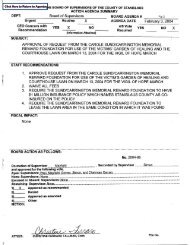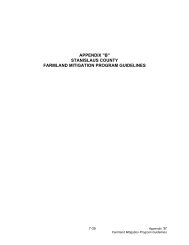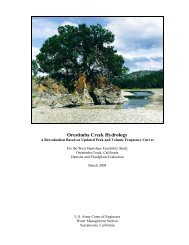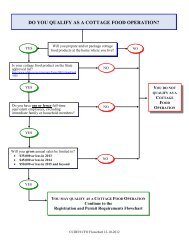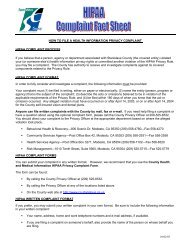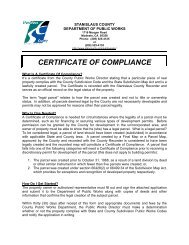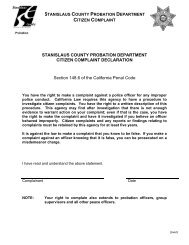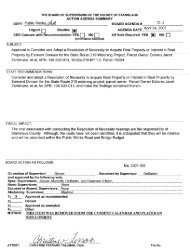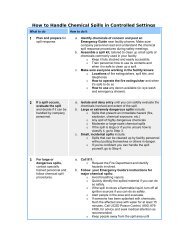Orestimba Creek Feasibility Study - Stanislaus County
Orestimba Creek Feasibility Study - Stanislaus County
Orestimba Creek Feasibility Study - Stanislaus County
Create successful ePaper yourself
Turn your PDF publications into a flip-book with our unique Google optimized e-Paper software.
Economics Appendix – Draft Report - <strong>Orestimba</strong> <strong>Creek</strong> <strong>Feasibility</strong> <strong>Study</strong>, <strong>Stanislaus</strong> <strong>County</strong>, California – September 2012<br />
is located at the intersection near the Lundy Road and the Railroad, which is where initial<br />
floodwater enters the Urban impact area. An index location directly next to the channel was not<br />
deemed to be to be a good representation of the nature of flooding (stage increase) in Newman<br />
due to the spreading of the water that occurs when it leaves the channel.<br />
Because EAD results are sensitive to rating curve changes, other index locations were tested in<br />
HEC-FDA to test the impact on the EAD results in Newman. Sensitivity IP 1 is located on the<br />
CCID Canal at the point of initial overtopping into Newman. Sensitivity IP 2 is located in the<br />
center of Newman in an area that is representative of stage increases in the city itself. Sensitivity<br />
IP 3 was the location used for the rural area, at the creeks initial point of overtopping. The index<br />
locations of the sensitivity runs are shown along with the documentation location in Figure 5-2<br />
below.<br />
The sensitivity runs show that the flatter the rating curve on the more frequent end, the more<br />
sensitive the results are to this stage uncertainty and the higher the EAD. These results can be<br />
found in Table 5-6 below. The index point used for this document appears to show a<br />
conservative EAD estimate compared to Sensitivity IP’s 1and 2, but is one that is more in line<br />
with historical flooding in the area. One last sensitivity run was done “without R&U” to see how<br />
much the overall results were being impacted in general and the result was an EAD of $2.8<br />
million, which is about 20% less than the “with R&U” result. This 20% seems to be in line with<br />
a modest increase in EAD usually seen when R&U is used.<br />
27




